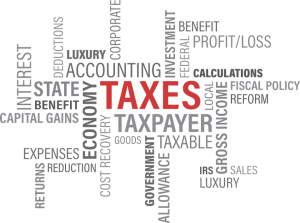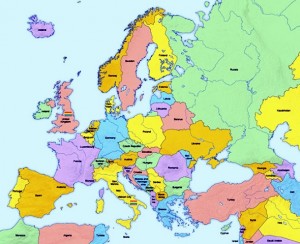In the United States, it’s tax season.  While much can be said about taxes, taxation, why they’re necessary, what the rates are, who pays them and who doesn’t, and why we Americans complain about them, here we will focus on three issues: how simple some nations’ tax forms are compared to ours; how our tax rates compare to those of the most successful European nations; and who really wins because of the complexity of our tax system. Then we will offer some modest suggestions for how to look differently at this issue.
While much can be said about taxes, taxation, why they’re necessary, what the rates are, who pays them and who doesn’t, and why we Americans complain about them, here we will focus on three issues: how simple some nations’ tax forms are compared to ours; how our tax rates compare to those of the most successful European nations; and who really wins because of the complexity of our tax system. Then we will offer some modest suggestions for how to look differently at this issue.
Tax Forms
Even if an American uses one of the tax preparation companies to help us file our taxes ourselves electronically, and considering the federal long forms only (not individual state forms), the Internal Revenue Service estimates “that the average taxpayer spends 13 hours preparing their tax return.”  The cost of a tax service runs from free (only applicable to simple forms) to hundreds of dollars, depending on the level you need and the cost of filing state returns. If an American has a tax advisor do his/her taxes, the cost ranges from about $176 to hundreds of dollars.
The cost of a tax service runs from free (only applicable to simple forms) to hundreds of dollars, depending on the level you need and the cost of filing state returns. If an American has a tax advisor do his/her taxes, the cost ranges from about $176 to hundreds of dollars.
In her book The Nordic Theory of Everything, Anu Partanen described her tax process in her native Finland: “My tax form had been one page long, and came prefilled with my earnings and taxes paid, including the calculations for amounts owed or refunded. My job was simply to check that everything was correct and amend it if needed. During my years as a salaried employee, I mostly just looked it over and did nothing. As a freelancer I had to add my expenses and send the form back, but even then the process was incredibly simple. All individuals were taxed separately, regardless of their marital status, and shared deductions were split between spouses.” (251)
We are not Finland – but we should take this scenario seriously.
Tax Rate Comparison (briefly)
One main reason for taking Partanen’s tax form scenario seriously is the many ways in which Finland and the other Nordic nations surpass the US in quality-of-life measures (and we have mentioned these measures in past blogs). A major reason that these other nations are so far ahead of us is due to the way their taxes are structured and used.  Not only do very wealthy Americans essentially pay less in taxes than the rest of us (Partanen, 253-55), but we pay significantly more – for considerably less return socially and economically – when all taxes are taken into account: federal, state, city, Social Security, Medicare, etc. (Partanen, 251-52).
Not only do very wealthy Americans essentially pay less in taxes than the rest of us (Partanen, 253-55), but we pay significantly more – for considerably less return socially and economically – when all taxes are taken into account: federal, state, city, Social Security, Medicare, etc. (Partanen, 251-52).
Partanen further explains that the American assumption that “ordinary Nordic citizens pay something like 70 percent of all their income in taxes” is not true. Instead, employers in some Nordic countries “are required to contribute more to their employees’ social security on top of their wages and employees’ own contributions” than US employers do. Further, high tax rates in other nations do not apply to someone’s total income but rather an amount above a certain level (Partanen, 251-53).
George Lakey, in Viking Economics, came to similar conclusions. In the US, the top “400 wealthiest families found ways to pay an average of just 17 percent of their income in taxes,” rather than the 39.6 percent they should have paid based on the established ranges (Lakey, 166). A number of our peer nations use high taxes to tackle environmental issues; punitive taxes on items viewed as luxurious or polluting are taxed as much as 25 percent; and inheritance taxes “operate for the common good” (Lakey 168). Lakey further tells the story of economics expert Jeffrey Sachs converting to believe in the high-tax/high-spending philosophy of the Nordic countries – that system much better provides for the common good than the neoliberal low-tax/low-spending philosophy (Lakey 171-72).
With all of our talk of equality and fairness in the US, which system is truly fairer? Which system – ours or those of the countries cited by Partanen and Lakey – gives the “most bang for the buck”? Which system truly creates the kinds of values – including “family values” – that we claim to want?
Who Wins from the American Tax System
American CEOs and other wealthy persons such as billionaire investor Warren Buffett admit that they should be paying higher taxes than they currently are (Partanen, 256-57). They echo sentiments of Nordic peoples, including well-off CEOs, who value fairness in their society very highly: it’s “a no-brainer that the rich are expected to contribute proportionately more” in taxes than those who earn less (Partanen, 256).  In addition, several CEOs that Partanen interviewed stated “that it was the all-important job of government to provide the basic social infrastructure of good education, health care, roads, broadband, and so on,” which then leaves companies free to innovate and grow (284).
In addition, several CEOs that Partanen interviewed stated “that it was the all-important job of government to provide the basic social infrastructure of good education, health care, roads, broadband, and so on,” which then leaves companies free to innovate and grow (284).
Besides the basic observation that our overall system favors the wealthy and should be overhauled, let us look at two examples of American executives who reap the benefits when you and I and millions more need to file our returns:
- Jeffrey Jones is the CEO of H&R Block. His basic annual salary is $6,921,200 and his net worth is approximately $14.7 million.
- TurboTax’s CEO is Sasan Goodarzi, and his net wealth in October 2019 was estimated to be $80.8 million. TurboTax is owned by Intuit; Goodarzi’s annual salary from Intuit is $12,644,800.
Let it sink in: if you use H&R Block or TurboTax, you are helping to pay executives who are making $7-81 million per year. Besides the fact that no individual or family needs that much money to live on (!), are these and other obscenely wealthy executives also finding loopholes in order to reduce their tax burden, at our ultimate expense?…
Some Modest Observations
The issue of taxes and taxation is huge, and we cannot give it a fully adequate treatment here. However, there may be a few take-aways – for us as citizens of a democratic republic with a market economy – that we can offer.
- Learn from European and other advanced democracies – educate ourselves as to how they are really taxed and what programs and services are actually supported by those taxes. Question our long-running American hubris and belief that we are superior to other nations.

- Support progressive taxation – with as few loopholes as possible. While still admiring entrepreneurs and others who are highly successful and make a great deal of money, the grotesque wealth of many of them is actually diminishing our quality of life.
- Think of taxes not as evils to be avoided at all costs but as necessities that contribute to the common good.
- Report tax fraud if you see it (and do not practice fraud yourself).
- Support measures that help small businesses, which might well include higher taxes on the largest corporations.
- Support ways to increase the tax base, such as crafting well-managed and fair immigration policy. If our birth rate does not sufficiently increase future workers for the labor pool, and this reality is coupled with an aging population that relies on the tax-supported social safety net, one of the few alternatives is to bring willing workers into our workforce. We must combat irrational and fear-based discrimination, prejudice and racism to make this happen.
- Be discerning as to the candidates for public office that we support – in primaries and general elections at all levels. If a candidate says something deceptively appealing like “no new taxes,” demand to know what that really means. It is very possible that that candidate mainly wants to placate his or her wealthy supporters, not create a progressive tax system that supports the common good.
Resources
Hill, Steven. Europe’s Promise: Why the European Way is the Best Hope in an Insecure Age. Berkeley and Los Angeles, CA: University of California Press, 2010.
Lakey, George. Viking Economics: How the Scandinavians Got It Right – and How We Can, Too. Brooklyn and London: Melville House, 2016.
Partanen, Anu. The Nordic Theory of Everything: In Search of a Better Life. New York: HarperCollins Publishers, 2016.
Reich, Robert B. Saving Capitalism: For the Many, Not the Few. New York: Vintage Books, 2015.
